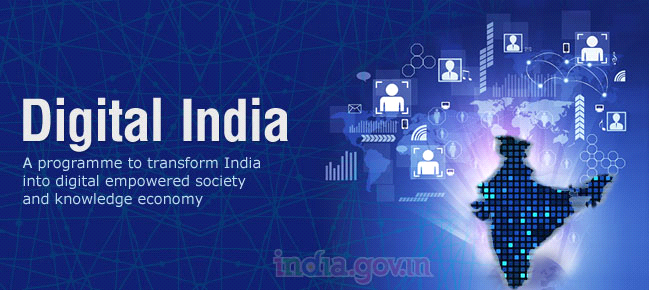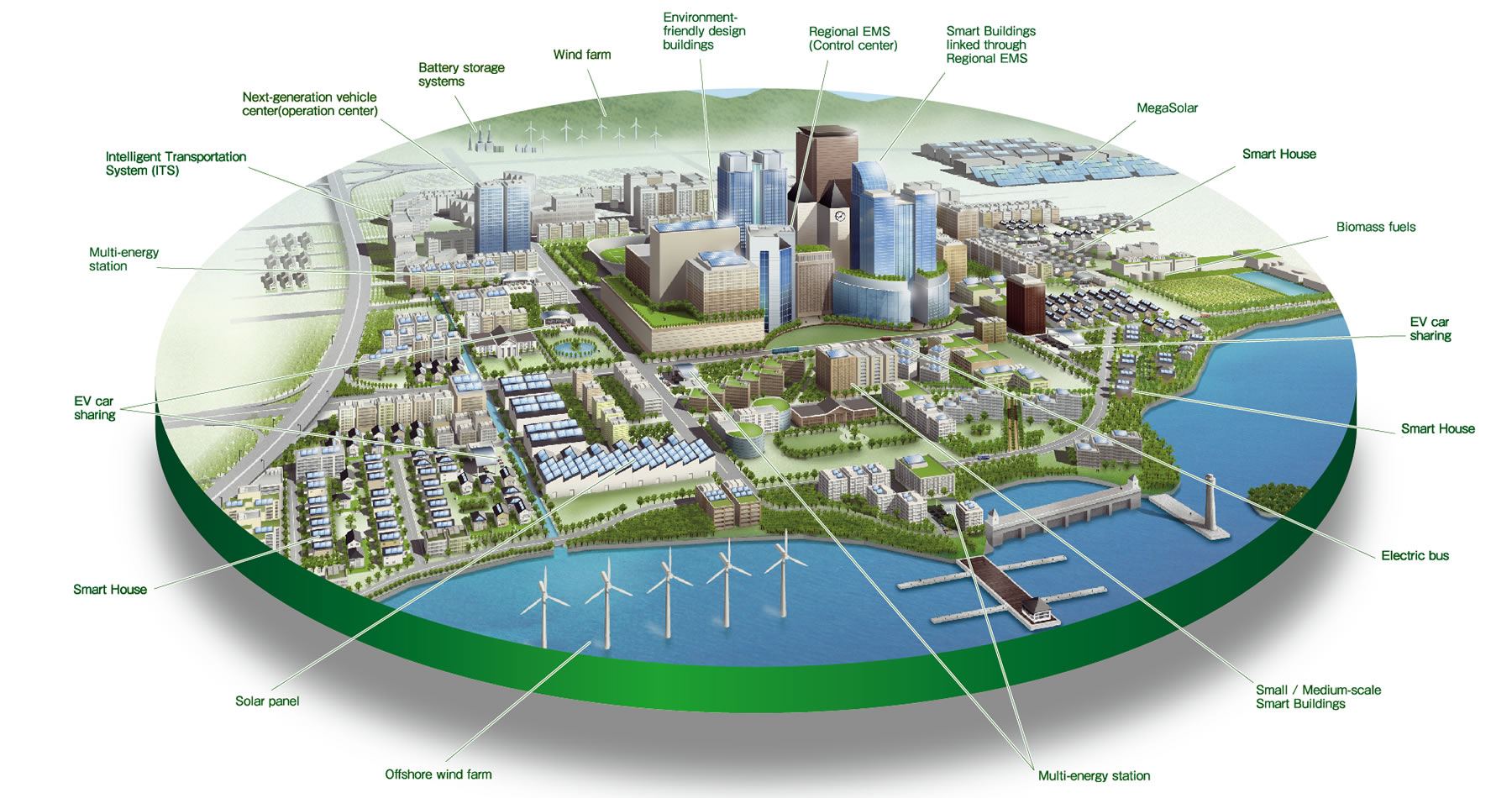Dear Readers & Aspirants, We collected Modi Schemes in Agriculture & Irrigation and make it in PDF format. We Hope it will definitely help you for your SBI PO,IBPS,RBI assistant and many more upcoming Exams. All the Best My Dear Aspirants & Readers.
- Modi Schemes: Banking & Insurance Part 1 PDF
- Modi Schemes: Agriculture & Irrigation – Part 2 PDF
- Modi Schemes: Environmental and Health Part 4 PDF
- Modi Schemes: child and Women Empowerment Part 5 PDF
#1.MAKE IN INDIA
VISION_
To become a manufacturing nation, India has to quickly move beyond rhetoric to create a clear strategy and favourable policy environment for manufacturing to take off. A close dialogue and partnership between government and the private sector is critical At this moment, the Prime Minister’s “Make in India” campaign appears to be exactly this — an imaginative marketing campaign. But there is much thought and even more work that is required to convert this to reality.
Need of make in india_
The theory behind “Make in India” is as simple as it is compelling.
1.India must become a manufacturing powerhouse in order to gainfully employ its demographic dividend.
2.Big labour pool and a large domestic market. In addition, with China’s competitive advantage in manufacturing eroding
- India has the opportunity to take some share of global manufacturing away from China.
All we have to do to improve the ease of doing business in India are these_
- stop tax terrorism
- improve infrastructure
- reform labour laws
- invest in skills development
- make it easier to acquire land
- implement Goods and Services Tax (GST)
- fast track approvals.

EFFECTIVE STEPS
1.Global manufacturing hub_
This welcome emphasis in our foreign investment policy on efficient and competitive domestic manufacturing will serve multiple objectives.
- First and foremost, it will enhance job opportunities within the country,
- second it will minimisze the imports of such products into the country, thereby mitigating the pressure on our trade deficit.
- third in the long run, if not in the near-term, it will help augment and diversify our exports from the manufacturing sector
- fourth it will help in bringing latest technologies into the countryand lastly, such domestic manufacturing will help minimize some of the trade frictions we have with other countries. The importance of domestic manufacturing with foreign investment in reducing trade frictions with other countries is at present ignored or underestimated
2.Competitive environment
The best way to ensure that foreign investment is of a high quality and yields value to the
country is to have a policy framework that requires it to operate in an unprotected, open and
competitive environment, and not behind high tariff walls or import restrictions, nor with the
aid of subsidies or other giveaways.
encouragement of exports with various kinds of subsidies and prop-ups, and curtailment of imports by high tariffs and other so-called trade remedy measures like anti-dumping or countervailing duties or other import restrictions.
Encouragement of domestic manufacturing of world-class standards, either by domestic or foreign investors or both, has not been a major objective of our foreign trade policy so far.Our foreign trade policy must recognise that encouragement of domestic manufacturing of world-class standards, catering solely even to our own market, is a preferable alternative to protection and subsidisation through high tariffs, trade remedy measures and financial giveaways.
3.Ensure IP protection
IPRs do not consist only of pharmaceutical patents as is commonly understood in our country they include as well copyright (computer software in our country is protected by copyright), trademarks, trade secrets, geographical indications, designs, trade secrets, business confidential information and data, and the like.Even if our IPR policies do not have domestic manufacturing as a central objective, they need to be implemented in such a way that they do not impede or deter technology-oriented domestic investments from foreign investors.
Our intellectual property laws are largely in conformity with international standards as reflected in the TRIPS Agreement of the WTO and other international conventions to which we have subscribed. Yet we tend to create an impression around the world that we do not value intellectual property or respect its adequate protection.
4.Address local woes
One other aspect that does not fall within the ambit of the aforesaid policies, but which is crucial to competitive domestic manufacturing needs to be touched upon here. Among the major reasons for our domestic industry being competitively disadvantaged vis-a-vis the rest of the world, two stand out prominently: first, the inadequacy and poor quality of our infrastructure, and second, the high cost of our capital. While protection and subsidisation is not the solution, this huge disadvantage faced by the domestic industry requires to be addressed with priority and ways and means found to mitigate it.
STRATEGIES FOR VARIOUS SECTORS _
1.Energy factor
This is an attractive proposed that has a lot of merit. A simple step of making it easier to do business will make a huge difference to India’s manufacturing competitiveness. It is one plank of a manufacturing strategy. India ranks 142 on the World Bank Index; China is ranked 90. If we were to improve by just 50 places, it would be a huge perceptual breakthrough. However, this is not a manufacturing strategy in itself.
As Reserve Bank of India (RBI) Governor Raghuram Rajan correctly and controversially pointed out, much has changed in the world since China elbowed itself into becoming the world’s factory two decades ago. The nature of manufacturing is changing. Low-cost automation and robotics are making pure labour cost arbitrage less important. Lead times and a flexibility of supply chains are far more important, leading many companies to move manufacturing back closer to the big markets, the United States and Europe
2.Industrial policy
To become a manufacturing powerhouse, India needs a manufacturing strategy, otherwise known as industrial policy. The idea of an industrial policy is out of vogue these days. It is seen as ineffective at best and even retrograde, running contrary to the idea of free trade. This is patent nonsense. Japan, Korea, China, Germany have all prospered by having a clear industrial policy and vigorously implementing it. The U.S., the United Kingdom, France and Italy have seen themselves deindustrialise by not having a clear industrial policy and are trying hard to course-correct this mistake. Policy has always mattered and when it comes to manufacturing competitiveness, India must have a clear industrial policy that spells out priority sectors and how we will build competitive advantage in a way that is consistent with our obligations to the World Trade Organization (WTO).
We must focus on building competitive advantage and global scale in sectors where we have a large domestic market and certain inherent capabilities. Strategy is all about making choices.
Here,five priority industries come to mind. Defence, because we are the world’s leading arms importer. Localising what we buy as a condition for all defence deals along with a willingness to allow majority foreign ownership can turbocharge our local defence industry.
The second critical industry is electronics hardware.India imports $45 billion of mobile phones, computers and communications hardware; by 2020, this is projected to grow to $300 billion and exceed our oil import bill.
This is unsustainable. We have to create policy incentives to create a local electronic hardware manufacturing ecosystem. Since most component suppliers, Original Equipment Manufacturers and Original Design Manufacturers are Chinese, this will necessarily imply incentivising Chinese companies to establish factories in India.
The size of our domestic market should make this possible. Concerns about security are misplaced; all our personal computers, cellphones and a lot of switches and routers are already made in China, so we are conceding nothing.
3.CONSTRUCTION
India will invest a trillion dollars over the coming years in improving infrastructure. We need to create incentives that not only spur investment in manufacturing materials such as cement and steel but also construction equipment, locomotives, power generation equipment and so on. Everything we install should be made in India.
4.HEALTH CARE
India’s generic pharmaceutical industry is world class. We must not concede on intellectual property rights that neutralise our advantage. India is also exceedingly good at frugal innovation in medical devices such as low cost X-ray and ECG machines. We have a real shot at being a world leader in innovation and manufacturing in this space.
Finally, agro-industries. We are one of the largest agricultural nations. A third of what we grow just rots and spoils. Investing in agro-industries such as food processing and establishing a reliable cold chain would make a huge difference in terms of rural employment and food security. If we had to pick just five industries where we want to bootstrap a strong competitive advantage it would be these. In other industries, whether it be textiles, toys, or automotive, we need to ensure that we do not disadvantage local manufacturing.
Creating ecosystems
Another critical strategic question is this: where do we want to make things? It is difficult to make a country the size of India into a uniformly attractive manufacturing location. Even China started its manufacturing odyssey by creating a few oases in the form of four special economic zones which were remarkably easy places to manufacture in. Where is India going to start its global odyssey? Manufacturing is all about hubs that are ecosystems for innovation, specialised skills and supply chains.
Where will India’s hubs be for pharma, for defence, for electronics, for machinery and construction equipment? How do we catalyse these hubs by creating world-class academic institutions and skills training institutes? What incentives will attract the world’s leading companies to establish global innovation and manufacturing centres in these hubs? Pune, Chennai, Bengaluru and Delhi are already emergent hubs but what will enable them to scale up to compete with Shenzen and Tianjin?
CONCLUSION_
- To become a manufacturing nation, India has to quickly move beyond rhetoric to create a clear strategy and favourable policy environment for manufacturing to take off.
- The government has chosen to quietly dismantle the sclerotic National Manufacturing Competitiveness Council (NMCC) but it needs to foster a more vibrant think tank in its A close dialogue and partnership between government and the private sector, both domestic and foreign, is critical.
- Indian companies along with Chinese, Japanese, German, American and Swedish companies are all vital partners and we must create an environment that is open and welcoming. For this, the right leadership of this vital mission is critical. There is a clear and short-lived window of opportunity to become a manufacturing nation. We must not squander it.
RECENT IN NEWS -MAKE IN INDIA _ intiatives _
- Spice Group said it would start a mobile phone manufacturing unit in Uttar Pradesh with an investment of ₹500 crore
- SAMSUNG –MSME-Samsung Technical Schools” will be established in India
- Hitachi said it was committed to the initiative, It said that an auto-component plant will be set up in Chennai in 2016
- Huawei opened a new research and development (R&D) campus in Bengaluru
- AIRBUS with MAHENDRA said that it will manufacture its products in India and invest $ 2 Billion US dollars.
- Marine Products Export Development Authority said that it was interested in supplying shrimp eggs to shrimp farmers in India under the initiative
- Tata JLR (Jaguar Land-Rover) announced that it will move its production of the Land Rover Defender to its Pune facility in India in 2016
# 2- Digital india
Digital India is a Programme to prepare India for a knowledge future
- The focus is on being transformative – to realize IT + IT = IT
- The focus is on making technology central to enabling change.
- It is an Umbrella Programme – covering many departments.
- It weaves together a large number of ideas and thoughts into a single, comprehensive vision so that
- each of them is seen as part of a larger goal.
- Each individual element stands on its own. But is also part of the larger picture.
- It is coordinated by DeitY, implemented by the entire government – both at the Centre and State.
- The weaving together makes the Mission transformative in totality
The Programme_
- Pulls together many existing schemes.
- These schemes will be restructured and re-focused.
- They will be implemented in a synchronized manner.
- Many elements are only process improvements with minimal cost.
- The common branding of programmes as Digital India highlights their transformative impact.

Vision of Digital India Centered on 3 Key Areas_
- Digital Infrastructure as a Utility to Every Citizen
- Governance & Services on Demand
- Digital Empowerment of Citizens
KEY components of digital india
- digital infrastructure-to support national optic fiber
- INTERNET OF THINGS (IOT)-essential building of smart cities
- Foreign ICT investments — make in india policy
9 pillars of digital india
- Broadband Highways
- Universal Access to Mobile Connectivity
- Public Internet Access Programme
- E-Governance –Reforming government through Technology
- eKranti – Electronic delivery of services
- Information for All
- Electronics Manufacturing –Target NET ZERO Imports
- IT for Jobs
- Early Harvest Programmes
Digital india targets
1.Broadband for all Rural–>
- Coverage: 250,000 GP ——–>1yr: 50,000 GP
- Timeline: December 2016 —–>2yr: 100,000 GP
- CAPEX: Rs 32,000 Cr —–>3yr: 100,000 Gp
- Nodal Dept: DoT
2.Broadband for all urban_
- Virtual Network Operators for service delivery.
- Mandate communication infrastructure in new
- urban development and buildings.
3.National Information Infrastructure
- Coverage: Nationwide
- Timeline: March 2017
- Cost: Rs 15,686 Cr
- Nodal Dept: DeitY
DIGITAL INDIA intiatives _
- India’s top billionaires pledged around Rs 5 lakh crore to projects related to Digital Indiagenerate employments for some 18 lakh people.
- government’s Rs 13-lakh-crore Digital India programme, saying it had the potential to bridge the digital divide and benefit billions of people through digital solutions in education, healthcare and irrigation sectors.
- Tata Consultancy Services which is majority owned by the Tata Group, has been an active contributor to e-governance programmes and the company will hire 60,000 IT professionals this year.
- Reliance Industries Chairman Mukesh Ambani said his company would invest Rs 2.5 lakh crore across different Digital India heads
- Digital India where 2 billion connected Indians drive the nation,” said the Prime Minister at the launch of the Digital India Week, which will take technology to the villages and block levels over the course of the next week.
- Kumar Mangalam Birla, chairman of the Aditya Birla Group, which owns telecom company Idea Cellular, said it would leverage its network of 165 million subscribers across 350,000 towns and villages in India to provide mobile-based healthcare and education services as well as weather forecasting advisories and ‘mandi’ prices to over one million farmers.
- Bharathi Mittal said his company would build on India’s existing extensive telecom network and spend over Rs 1 lakh crore in the next five years. Bharti group company Bharti Airtel is India’s largest mobile phone operator.
- Reliance Group Chairman Anil Ambani, who helms Airtel’s rival telco Reliance Communications, pledged to invest Rs 10,000 crore to fund transformational initiatives across the cloud, digital and telecom space.
- Vedanta Resources Chairman Anil Agarwal, to provide education through digital medium, or e-Shikhsha. We have set up a prototype near Delhi where children will be provided e-Shikhsha and women will be taught skill development.
- Digital India programme, it will empower women and improve health and education of children,” he said. He also announced an investment of Rs 40,000 crore to set up an LCD fab which could potentially employ 50,000 The fab is aimed at reducing the electronics import by 20 per cent, in line with Prime Minister Modi’s vision to reduce dependence on electronics imports.
- Intel keen to partner ‘Digital India’ initiative
#3-SKILL INDIA
After ‘Make in India’ and ‘Digital India’, the government is expected to come up with a revised skill development policy or the ‘Skill India’ scheme by March 2015, minister of state for skill development and entrepreneurship Sarbananda Sonowal
TARGET

The new scheme is expected to move beyond the target of skilling 500 million youth by 2020 that was set by the UPA government.
Focusonyouth
With a focus on creating jobs for youth, the government has decided to revamp the antiquated industrial training centres that will skill over 20 lakh youth annually and devise special courses based on industry needs.
The move is a part of the labour ministry’s massive overhaul of the near obsolete Industrial Training Institutes (ITIs) and skill development institutes that would now be armed with revised curricula, new courses and an expanded reach across the country.
ITI Skill Centres_
- The ministry, will set up 1,500 new ITIs across the country and another 100-odd such centres in North East and Left Wing Extremism affected states, has also taken advice from Prime Minister Narendra Modi to locate some of these institutes in industrial clusters.
- Based on inputs from the Prime Minister, the new institutes will not only be set up in so far uncovered areas but majorly in industrial clusters so that students can be trained according to industry needs and placed with these companies said a senior official involved in the development, adding that the first preference to requests from industry.
- But while these ITIs will be set up by the year-end, the ministry has also decided to allow the existing institutes to meet the immediate needs of industry by offering courses of their interest.
To this end, the ministry has also decided to formulate courses for the skill development institutes based on industry needs. Firms will have to sign agreements with the Directorate General of Employment and Training to avail these specialised courses and will recruit at least 80 per cent of the students for a minimum of six months. The specialised courses will be run for an 18 month period and based on their success in terms of placement will be continued on a permanent basis.
“There has already been a lot of interest from companies in sectors such as manufacturing, construction, chemical and even e-commerce. We will be holding discussions with industry chambers later this month,” said the official.
Industries with at least 300 permanent workers can sign such MoUs with the DGET. The labour ministry is also banking on the over 2,500 industry bodies in the MSME sector to recruit the students.
PM Narendra Modi has stressed on his vision of transforming the country into a ‘Skilled India’ and the government is expected to go much beyond the targets set by the UPA government.
Currently, there are 11,000-odd ITIs being run by the government as well as on PPP basis with a seating capacity of 15.5 lakh students. The new ITIs being planned will train 4.5 lakh students.
The labour ministry is also fixing the biggest challenge before these ITIs in attracting students — outdated curricula that had little use for …continued »
*Finance Minister Arun Jaitley said the government plans to launch a National Skills Mission through the Skill Development and Entrepreneurship Ministry*
In his budget speech, he said that the mission would consolidate all skill development initiatives which are spread across several Ministries.
Key factors_
India is one of the youngest nations in the world with more than 54 per cent of the total population below 25 years of age. Yet today less than 5 per cent of our potential workforce gets formal skill training to be employable and stay employable,” Mr. Jaitley said.
He said that the Deen Dayal Upadhyay Grameen Kaushal Yojana was launched to enhance the employability of rural youth which is the key to unlocking India’s demographic dividend. A sum of Rs. 1,500 crore was allocated for this scheme in the budget, for which disbursement will be through a digital voucher directly into qualified student’s bank account.
The Union Budget 2015 paved way for the launch of a much-awaited National Skills Mission to complement Prime Minister Narendra Modi’s ‘Skill India’ and ‘Make in India’ exhortations. However, much work needs to be done on the ground for the government to prove that this step is a departure from rhetoric lip service.
Problems to over take_
1.The magnitude of the problem has been analysed by numerous experts for a country that adds 12 million people to its workforce every year, less than 4 per cent have ever received any formal training. Our workforce readiness is one of the lowest in the world and a large chunk of existing training infrastructure is irrelevant to industry needs.
2.This is not as much due to lack of monetary investment as it is a predicament about grossly inefficient execution. The government already spends several thousand crores every year on skill development schemes through over 18 different Central government Ministries and State governments. The need of the hour is to improve resource utilisation and find solutions that can address the systemic and institutional bottlenecks constraining the sector.
3.Keeping in mind the revised National Skill Development Policy due to be announced in a few months that will also outline the contours of the National Skills Mission, we present an analysis of three priority areas that the government needs to address.
# 4-Smart cities

uses digital technologies to enhance performance and well being, to reduce costs and resource consumption, and to engage more effectively and actively with its citizens.
* Key ‘smart’ sectors which includes__
- Transport
- Energy
- Health care
- Water and waste
A smart city should be able to respond faster to city and global challenges than one with a simple ‘transactional’ relationship with its citizens
terms that have been used for similar concepts include ‘cyberville, ‘digital city’’, ‘electronic communities’, ‘flexicity’, ‘information city’, ‘intelligent city’, ‘knowledge-based city, ‘MESH city’, ‘telecity, ‘teletopia’’, ‘Ubiquitous city’, ‘wired city’.
COMMERCIALISATION_
Large IT and telecommunication companies such as Cisco, IBM, and Microsoft have developed new solutions and initiatives for intelligent cities as well. Cisco, launched the Global Intelligent Urbanization initiative to help cities around the world using the network as the fourth utility for integrated city management, better quality of life for citizens, and economic development. IBM announced its SmarterCities to stimulate economic growth and quality of life in cities and metropolitan areas with the activation of new approaches of thinking and acting in the urban ecosystem.
CRISTISM_
The main arguments against the superficial use of this concept in the policy arena are_
- A bias in strategic interest may lead to ignoring alternative avenues of promising urban development.
- The focus of the concept of smart city may lead to an underestimation of the possible negative effects of the development of the new technological and networked infrastructures needed for a city to be smart.
- As a globalized business model is based on capital mobility, following a business-oriented model may result in a losing long term strategy: “The ‘spatial fix’ inevitably means that mobile capital can often ‘write its own deals’ to come to town, only to move on when it receives a better deal elsewhere. This is no less true for the smart city than it was for the industrial (or)manufacturing city.
NEED OF SMART CITIES INDIA
India has a population of 1.27 billion plus, and growing
- To accommodate rapid urbanization, the Government of India has allocated Rs. 6,000 crore for the smart cities project and to develop infrastructure in another 500 cities
- Most other funding will come from Indian and overseas private sector companies
- The exhibition and conference will connect Indian and foreign exhibitors, with various ministries, state governments, municipal bodies, industry leaders, decision makers, and stakeholders, who are developing smart cities
- The platform will attract government officials, investors, industry leaders and experts from around the globe to discuss and exchange ideas, information, project reports, etc., on the opportunities and future requirements for developing smart cities in India
- We invite you to participate at the event as an exhibitor, sponsor, visitor or speaker
Policy to boost smart cities
- govt could drop all conditions regarding FDI in constrction for smart cities
- special despension for afforable housing too
- govt plan to built 100 smart cities
- A cabinet note is readied for policy change
- Relaxation for genaral FDI condition for constrction likely too
*SMART CITIES – Assistance from other countries
- SINGAPORE –100 smart cities across the country
- USA–AJMER, AHEMEBAD, VISHAPATNAM
- JAPAN–VARANASI
- FRANCE –Pondicherry and Nagpur & gujarat
- SPAIN —DELHI
- ISREAL — Maharastra
- CHINA -PUNE
- CHINA – Andhrapradesh
- JAPAN –MUMBAI
- AUSTRALIA– ATAL scheme
- AUSTRIA — JNNURM
- GERMANY –3 more smart cities * no mentiones cities
- CANADA — Wooden multi-storey housing technology in urban cities
LIST OF 100 PROPOSED SMART CITIES__

- Pune – Maharashtra
- Mumbai – Maharashtra
- Nagpur – Maharashtra
- Nashik – Maharashtra
- Aurangabad – Maharashtra
- Bhivandi – Maharashtra
- Calcutta – West Bengal
- Durgapur – West Bengal
- Haldia – West Bengal
- Habra – West Bengal
- Jangipur – West Bengal
- Ahmedabad – Gujarat
- Surat – Gujarat
- Vadodara – Gujarat
- Rajkot – Gujarat
- Bhavnagar – Gujarat
- Junagadh – Gujarat
- Gandhi Nagar – Gujarat
- Bhopal – Madhya Pradesh
- Indore – Madhya Pradesh
- Gwalior – Madhya Pradesh
- Burhanpur – Madhya Pradesh
- Jabalpur – Madhya Pradesh
- Chennai – Tamil Nadu
- Coimbatore – Tamil Nadu
- Madurai – Tamil Nadu
- Tiruchirappalli – Tamil Nadu
- Salem – Tamil Nadu
- Tirunelveli – Tamil Nadu
- Bangalore – Karnataka
- Gulbarga – Karnataka
- Bidar – Karnataka
- Bijapur – Karnataka
- Badami – Karnataka
- Pattadakal – Karnataka
- Mahakuta – Karnataka
- Thiruvananthapuram – Kerala
- Kollam – Kerala
- Kottayam – Kerala
- Tiruvalla – Kerala
- Ernakulam – Kerala
- Cochin – Kerala
- Thrissur – Kerala
- Hyderabad – Telangana
- Warangal – Telangana
- Karimnagar – Telangana
- Nizamabad – Telaganana
- Nalgonda – Telangana
- Guntur – Andhra Pradesh
- Vijayawada – Andhra Pradesh
- Kurnool – Andhra Pradesh
- Chittoor – Andhra Pradesh
- Kanpur – Uttar Pradesh
- Allahabad – Uttar Pradesh
- Lucknow – Uttar Pradesh
- Jhansi – Uttar Pradesh
- Faizabad – Uttar Pradesh
- Varanasi – Uttar Pradesh
- Jaipur – Rajasthan
- Ajmer – Rajasthan
- Bharatpur – Rajasthan
- Bikaner – Rajasthan
- Jodhapur – Rajasthan
- Kota – Rajasthan
- Udipur – Rajasthan
- Ludhiana – Punjab
- Amritsar – Punjab
- Jalandhar – Punjab
- Patiala – Punjab
- Muzaffarapur – Bihar
- Patna – Bihar
- Gaya – Bihar
- Bhagalpur – Bihar
- Bihar Sharif – Bihar
- Faridabad – Haryana
- Gurgaon – Haryana
- Panipat – Haryana
- Ambala – Haryana
- Guwahati – Assam
- Tinsukia – Assam
- Odalguri – Assam
- Tangla – Assam
- Goalpara – Assam
- Bhubaneswar – Odisha
- Cuttack – Odisha
- Rourkela – Odisha
- Sambalpur – Odisha
- Balasore – Odisha
- Shimla – Himachal Pradesh
- Dehradoon – Uttarakhand
- Haridwar – Uttarakhand
- Roorkee – Uttarakhand
- Jamshedpur – Jharkhand
- Dhanbad – Jharkhand
- Ranchi – Jharkhand
- Gangtok – Sikkim
- Pelling – Sikkim
- Yuksam – Sikkim
- Bishnupur – Manipur
- Chandel – Manipur




